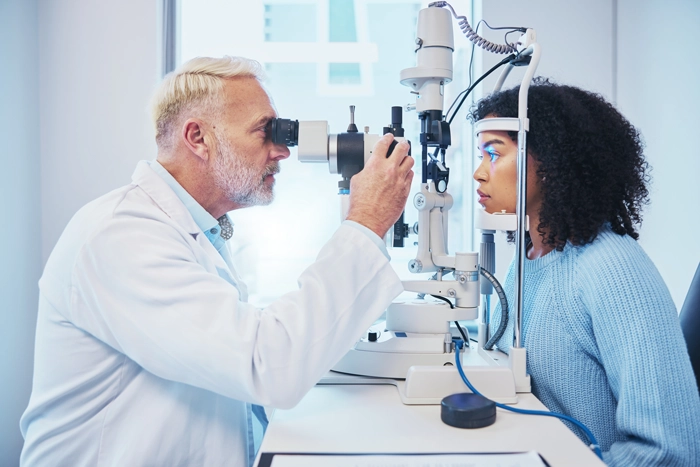Astigmatism may sound intimidating, but it's more common than you'd think. According to the American…

How Your Computer Screen is Affecting Your Vision
During the course of most people’s days, you’ll likely use several different devices. It’s common for many professionals to check their cell phone, log on to an iPad/tablet or use a computer, all in tandem. It might come as no surprise to you that overuse of computers and technology can harm your vision. Active users often experience symptoms ranging from diminished or blurry vision to eye strain, headaches, and neck or shoulder pain.
Unfortunately, we shrug off these problems because technology today is unavoidable. The idea of limiting technology isn’t practical for most busy professionals, it’s just not sustainable with our day-to-day work life. But the good news is you don’t have to give up technology to guard your vision from damage.
Computer Vision Syndrome and How to Avoid it
Vision problems directly attributed to prolonged use of technology are so common now that the American Optometric Association (AOA) has given the condition a name — Computer Vision Syndrome. While the prolonged use of computers and various screens will leave people at greater risk for developing this eye condition, there are many ways to diminish the damage or avoid it altogether. The following are some best practices when it comes to protecting your eyes.
- Get Regular Vision Screenings. If you use the computer for a large portion of your day, it’s important that you have your vision screened regularly. The earlier an eye condition is caught, the better your chances of diminishing any permanent impact on your vision. Your eye doctor can give you tips and advice on how to adjust things to better improve your eye function, such as placement of your screen or exercises to improve vision.
- Wear Your Prescription Lenses. Many cases of computer-caused eye strain can be avoided by wearing prescription eyeglasses. Some people have them and aren’t very good at wearing them all the time. For those who might not be aware that they need glasses or contacts for their vision, scheduling regular eye appointments will catch this condition and help ease the strain on their eyes.
- Check Lighting and Seating. It’s important that you have optimal lighting for reading materials, even though the computer screen is lit. Good positioning will allow your eyes, neck and shoulders more comfort with less strain. Other environmental factors can impact the glare on the screen.
- Take Frequent Rest Breaks. A good rule of thumb is to take short rest breaks, even 5 or 10 minutes, during which you don’t look at any screen. Walk around, focus on other things and give your eyes a bit of a break.
These tips will help, but it’s most important to schedule regular appointments with a professional who can give you more thorough advice on guarding your vision against current and future damage.
Are you interested in updating your vision insurance policy? View our vision and dental plans today to find the plan that best fits your needs.


